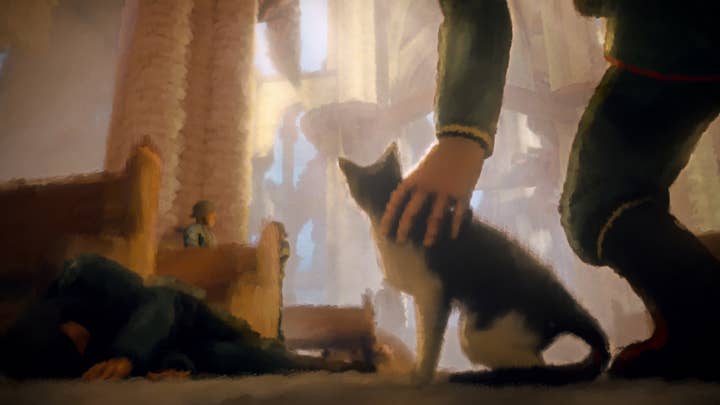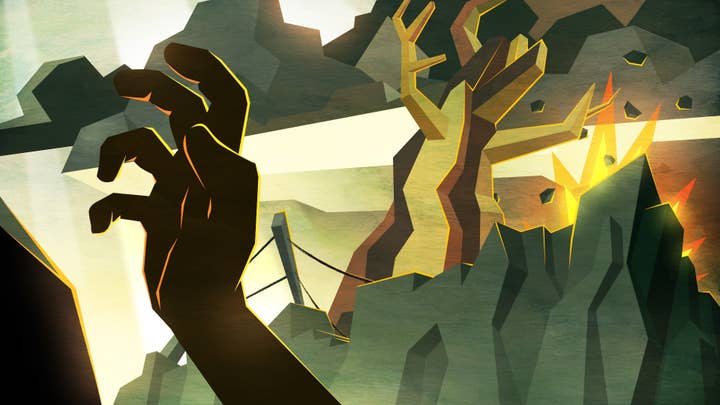The art of war: Defining the look of 11-11 Memories Retold
Art director Bram Ttwheam discusses the visual style of Aardman Animations' first commercial game
Best-known for creating British cultural icons Wallace and Gromit, the addition of Bristol-based Aardman Animations into the games industry might seem an odd one.
The Oscar winning studio has found considerable success in the past with feature films like Chicken Run, and The Pirates! In an Adventure with Scientists!
While the studio has dabbled in the past with video games as an educational medium, 11-11: Memories Retold is the outfit's first time tackling a commercial release, and it's been "a bit of an eye-opener" for art director Bram Ttwheam.

Speaking with GamesIndustry.biz ahead of the game's release on Friday, Ttwheam discussed the evolution of its distinctive art style, and the challenges of adapting from the linear world of film production to wildly different arena of game development.
"Everything seemed to be happening simultaneously, which is quite unnerving at times, but it's a rollercoaster ride for sure," says Ttwheam. "I have found it slightly unusual in that respect.
"Also, having the added cog in the machine of level designers who kind of seem to be pretty much the gods of the industry to a degree; what they say goes, and quite often you'll be working on things, trying to make something beautiful and wonderful, and it will be obsolete before you've finished because the level has shuffled around so much. So that's been bit of an eye-opener for me."
Despite Ttwheam's 20 years' experience as an animator, he says working on a game has been something of a learning experience.
"Although it's a different working environment and process, lots of the disciplines of storytelling are definitely similar," he says. "Some of the things that you have to take into account as a level designer, like player leading and stuff like that, are things that you can definitely take into the more traditionally visual world of animation I think.
"It's all about subconsciously leading people where you want them to go, and making them look at certain things, which are definitely transferable skills... The use of counter-colours in certain environments just to nudge an eye. It's definitely something I will be taking into my future projects."

Part of Ttheam's motivation to become involved in the project originally was the chance to experiment with different art styles in real time shaders, and says games as a medium presented that unique opportunity.
"Photo realism, although I am seduced by it just like anybody else... in a way it's less of a challenge and less appealing to me because there's so many other layers of art and emotion that we should be trying to explore in games," he says. "It seems that if you want people to engage on different emotional levels, there are plenty of things that are untapped."
The distinctive art style evolved a lot during the early stages of development. Ttwheam ultimately leant into the softer impressionist movement which provides a "broader palette emotionally" than something like cubism. Thematically it also ties in to the characters who, much like the impressionism, are products of a pre-war environment, unchanged by the rapid technological advancements or horrors of global conflict that would shape generations to come.

"I started to get excited about the possibility of exploring other art movements," says Ttwheam. "A lot of modernism, I feel, was kicked off by the First World War. That huge surge in mass communication that the war generated seemed to really shake things up artistically as well as in society.
"So I was looking into experimenting with cubisms and vorticism and movements like that that were being generated around then. But the nature of this story, our characters are pre-war characters thrown into the war... so perhaps we should using something that's a bit more gentle.
"Their stories in this game are quite gentle. It's a non combatant game, so [I wanted] something that's a bit more painterly and soft like impressionism, which I know was considerably earlier than the First World War conflict, but these painters were still around and very relevant in the art world. That painterly style seemed to fit more comfortably with the narrative we were doing. Plus it enabled us to experiment with colour, and a more subjective way of telling the story through the choices of brushstrokes."

Ttwheam also wanted the art style to have a handcrafted feel, one that he wanted reflected in other areas of design such as the music.
"It's a human story, and I was very keen to have every aspect feel man-made to a degree," he says. "I liked the fact that the music has been traditional orchestration, and I was very keen on having things close mic'd so you could almost hear the people play the instruments.
"Keeping that handcrafted and handmade feel is something that I feel really suites the story where you're supposed to empathise with someone on a human level, and I like to think that subliminally it will have an affect on the player."
How 11-11: Memories Retold will shape the future of Aardman Animations is currently unknowable, but Ttwheam believes the studio has potential to contribute to the industry in a unique way.
"I do feel like that's another side of games that I think us as a studio could potentially bring that perhaps other people wouldn't."

